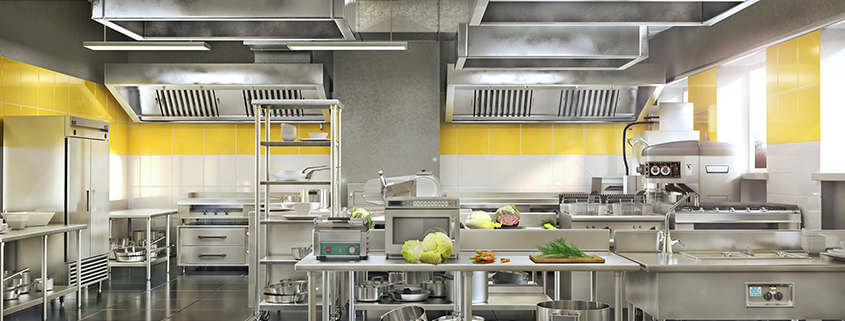Virtual kitchen, also popularly known as Cloud Kitchen or Ghost Kitchen, is the kind of online and on-call delivery restaurants. Such kitchens are popping up in every nook and corner of your locality or city.
These virtual kitchens have their own set of pros and cons for both the kitchen owners and the customers. Food lovers and consumers changing approaches to fine dining and eating out have seeded in the conception of this innovative idea about Virtual Kitchens. Let’s now dive into the features and prospects aiming to make virtual kitchens beneficial for all its stakeholders.

Also Read: Virtual Kitchens: The New Fad or the New Future
How did the Idea of Virtual Kitchens Take Birth?
Ordering food or delicacies while sitting at the comfort of your home from a place you can’t go regularly or boredom from cooking food at home are some of the reasons why virtual kitchens exist. It’s just like any normal dine-in restaurant or eating joint without seating or a place to hang out. The food is prepared for commercial purposes and it must adhere to the safety and quality standards just like any normal dine-in restaurants or lounges. Here, you eat at your home, your office, or any other comfortable space of your choice.
How does a Virtual Kitchen Operate?

Ghost or virtual kitchens generally partner with many third-party food delivery companies, apps and credible restaurant management systems like inresto. These delivery partners and restaurant management systems list the menu options, price, ingredients, reviews and other important information regarding the virtual kitchen on their websites or applications for the customers to notice from.
With inresto, you can ensure these delivery partners maintain certain regulations and food standards that the kitchen owners must fulfil in terms of quality, price, packing, offers and other delivery and publicity fees for providing their services to the virtual kitchens.
A higher customer review in terms of taste and feedback on these applications are more likely to top the listing charts along with other restaurants and cafes offering home delivery services.
Another way to reach out to maximum customers in terms of sales is attractive offers and order on call feature. Many famous virtual kitchens of the city have their separate delivery mechanism that delivers freshly cooked food at your doorstep with a single call. Cash on delivery and online payment options can also be included to enhance the flexibility of your virtual kitchen business.

Features of a Virtual Kitchen
The inception of the concept of the virtual kitchen has somewhat shaken the fundamentals of the hospitality industry, especially in the cafes, restaurants and the dine-out segment. This idea behind virtual kitchens altogether sets a new perspective of “eating in comfort” and so this concept is here to stay and grow for many years to come. In addition to empowering individuals and groups with exceptional cooking skills and talent to build themselves, the low-investment- high return business feature makes the idea of virtual kitchens even more actionable.
Also Read: Pros & Cons of the Cloud Kitchen Concept
Let’s dig in deep and find out why Virtual Kitchens have become an integral make part of our present & future:
1. The Economy of Investment, Resources and Manpower
The major cost incurred in setting up a restaurant or a cafe is the rent or price of the place, the beautiful and attractive interiors, employing staff to handle customers, the cost of crockery, dishes and other furniture and showcasing materials.
One other factor that makes up the major chunk of your investment is the constant marketing and self-promotion for the restaurant or the cafe. While setting up a virtual kitchen, all these requirements do not need to be addressed. The basic requirements are chefs or cooks, a fully equipped kitchen and a stable delivery and promotion mechanism with a very little workforce, sometimes even just two people if you start small.
2. Better Profits
With low investment cost, the return or the profit factor in a Virtual Kitchen venture is very high. There is a direct relationship between the quality, quantity and order & delivery mechanisms and the potential growth of good customers. The more robust and amazing these services are, the better clientele this mechanism can fetch for you.
In some cases, people also outsource the business aspect of Virtual Kitchens and focus on food quality and taste. Both these options are more economical and profit-making than setting up space for customers to be catered along with cooking at the same time.
3. Scalability

Another lucrative factor that makes virtual kitchens the future of restaurants is the option to scale up the business. Such kitchens have a very flexible option to expand the business with growing demand and adjust accordingly. By tweaking some basic elements like raw material and kitchen size, the similar virtual kitchen which was sending out 50 orders a day can now send 250 orders a day.
This depends upon the hard work, persistence and standard you set for yourself as a chef and business owner. This scalability also gives the freedom to the owner for deciding the menu, the suppliers, the schemes and offers as well as to take decisions related to the value and delivery chain.
Conclusion
The virtual kitchen setup, for now, may look like a fad but based on several factors like low investment, growing digital market, no rental and sitting cost included is a fascinating and sustainable business model. With low risk involved and better profit margin, newbies with little or no business know-how can also take advantage of this opportunity. Hassle-free management and execution is also an added advantage in these kinds of virtual kitchens.
Starting a virtual kitchen can be your first step towards becoming a full-fledged entrepreneur in the food industry and hospitality sector. If you’re starting a virtual kitchen, you need to get a good restaurant management system like inresto by your side.

